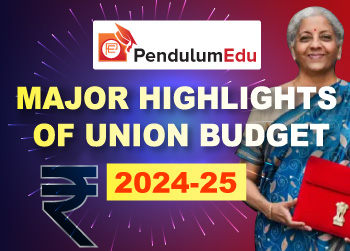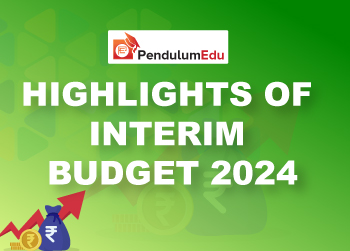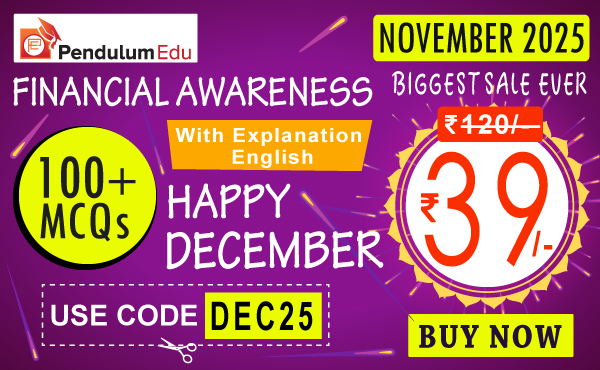Topic: Indian Economy/Financial Market
1. In October 2024, monthly exports from India's services industry reached an all-time high of $34.31 billion.
- In comparison to October 2023, the exports from services industry in India grew by 22.3% in October 2024.
- This has been brought on by ongoing policy support and investments in digital infrastructure, such as data centres and high-speed internet.
- The internet, applications, emails, and digital intermediation platforms are the services traded through computer networks. Such services have grown exponentially.
- India now exports $257 billion worth of digitally provided services, up from a meagre $30 billion in 2005.
- Since 2010, growth has been especially remarkable. By 2014, exports had nearly quadrupled from $20 billion to $80 billion.
- Prior to Covid, the increase was steady and reached $191 billion in 2019. Exports almost doubled from their pre-Covid peak by 2023.
Topic: Taxation
2. Anti-dumping duty has been imposed by Finance Ministry on digital plates from five countries.
- The five countries are China, South Korea, Japan, Taiwan and Vietnam.
- Finance Ministry has imposed a definitive anti-dumping duty on digital plates coming from these five countries for a period of five years.
- The revenue department has imposed definitive anti-dumping duty based on recommendations of the Directorate General of Trade Remedies (DGTR) in its final findings on sunset review petition.
- TechNova Imaging Systems (P) Ltd. had filed the petition seeking sunset review of anti-dumping duty.
- The current anti-dumping duties were imposed in July 2020. They are in force till January 29, 2025.
- Digital Offset Printing Plates (DOPP) are commonly known as Digital Plates. DOPP are used in the printing industry. They are made from high purity litho grade aluminium coils.
Topic: RBI
3. RBI proposed lookup facility for NEFT and RTGS by April 1.
- The RBI proposed to introduce a lookup facility for beneficiary accounts in the Real-Time Gross Settlement (RTGS) and National Electronic Funds Transfer (NEFT) systems to prevent fraud.
- It will allow users to view and verify the name of the beneficiary before making a transaction.
- It is similar to the existing features in the Unified Payments Interface (UPI) and Immediate Payments Service (IMPS).
- At present, the sender cannot see the beneficiary's name before making a transaction through NEFT and RTGS.
- NPCI has been given this task for developing this facility and onboarding all banks for this facility in NEFT and RTGS.
- Under this new facility, the remitting and beneficiary banks will need to store data related to the lookup queries and responses.
- NPCI will not store any data related to the lookup queries.


Topic: Indian Economy/Financial Market
4. India now ranks fourth in the world with foreign exchange reserves that have risen to over 700 billion US dollars.
- The overall amount of foreign direct investment inflows throughout the last ten years, from 2014 to 2024, was around $709 billion.
- On the Global Competitiveness Index, India rose from 71st place in 2014 to 39th place in 2018.
- India's economy is currently the fifth largest in the world, and it is moving closer to becoming the third largest.
- Between 2015 and 2018, India rose 42 spots in the Ease of Doing Business index.
- India surpassed China as the world's second-largest producer of crude steel in 2024.
- Additionally, it became the world's second-largest producer of mobile phones.
- The education sector in India is also expanding remarkably.
- Seven of India's universities are currently ranked in the Top 100 in Asia, according to the QS World University Rankings: Asia 2025.
Topic: Banking/Financial/Govt Schemes
5. Under the SVAMITVA Scheme, PM Modi issued over 50 lakh property cards.
- Property owners in more than 46,000 villages spread across 200 districts in 10 States and two Union territories received these cards from him.
- A significant milestone has been reached with the preparation and distribution of over 2 crore property cards under the SVAMITVA plan, as well as the distribution of over 58 lakh property cards in a single day.
- The Prime Minister introduced the SVAMITVA initiative to improve the economic development of rural India by using the newest surveying drone technology to provide "Records of Rights" to people that own homes in populated parts of villages.
- Additionally, through bank loans, the scheme enables institutional credit and facilitates the monetisation of properties.
- 92% of the targeted villages—more than 3.1 lakh villages—have completed drone surveys.
- For around 1.5 lakh villages, about 2.2 crore property cards have been created thus far.
- In Haryana, Uttarakhand, Goa, and Tripura, the scheme has reached full saturation.
Topic: Taxation
6. New and small businesses will get GST registration in 3 working days.
- Under the new mechanism, new and small businesses will get the new registration within 3 working days.
- This mechanism has got ‘in-principle’ approval from the GST Council.
- The main of this mechanism is to resolve complaint about unnecessary queries by tax officials and denial of registration on unnecessary grounds.
- It will also help to curb the exploitation of the present registration process through fabricated or fake identities to obtain multiple registrations.
- This mechanism includes the four-tier structure. The first tier would involve new and small businesses.
- The second tier would be for risk-free or deemed trusted businesses.
- The third tier will be for existing businesses, which wish to pass on ITC more than the specified limit but are not a deemed trusted entity.
- The fourth tier is proposed for change of category of businesses to pass on ITC more than the specified limit.
Topic: Indian Economy/Financial Market
7. Rural areas saw a 9% increase in Monthly Per Capita Expenditure (MPCE) in 2023–24 compared to 2022–23.
- The MPCE in urban areas increased by around 8% in 2023–24 compared to 2022–23.
- In rural India, the average MPCE has been estimated to be 4,122 rupees, based on the Household Consumption Expenditure Survey 2023-24.
- According to estimates, the average MPCE in urban India is 6,996 rupees.
- Household Consumption Expenditure Survey 2023-24 has been released by the Ministry of Statistics and Program Implementation.
- More than 2.6 lakh households nationwide were surveyed.
- According to data, consumption in rural areas is increasing more quickly than in urban areas.
- The urban-rural consumption gap is closing significantly.
- In MPCE, the urban-rural divide decreased from 84% in 2011–12 to 71% in 2022–2023.
- According to the survey, non-food items continue to account for the majority of a household's typical monthly expenses, accounting for roughly 53% in rural areas and 60% in urban ones.
- In both rural and urban households, beverages, refreshments, and processed foods continue to account for the largest portion of food expenditures in 2023–2024.
Topic: Indian Economy/Financial Market
8. According to the Finance Ministry, the Indian economy will expand by about 6.5% in real terms during the 2024–2025 fiscal year.
- Finance Ministry's Department of Economic Affairs said this in its monthly economic report for November.
- The estimate is in line with the RBI's updated FY25 growth prediction of 6.6%.
- GDP growth was predicted by the July Economic Survey to be between 6.5 and 7 percent.
- The expectation for economic growth in Q3FY25 is favorable, according to the November monthly economic report from the finance ministry.
- Sales of domestic tractors and two- and three-wheelers increased significantly in October and November, indicating strong rural demand.
- A strong increase in air travel within that time frame suggests that urban demand has recovered.
- In the first half of 2024–2025, India grew by an average of 6%.
- Additionally, reduced food and core inflation in November 2024 contributed to an easing of inflationary pressures.
- Between July and September, India's GDP growth unexpectedly dropped to a seven-quarter low of 5.4%.


 Previous
Previous 
 Latest
Latest 








Comments